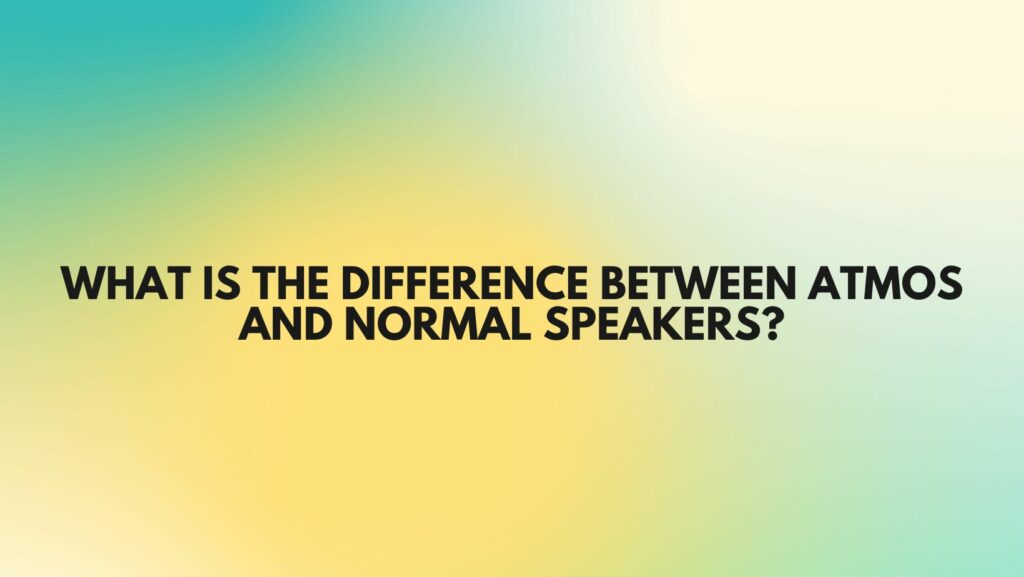In the ever-evolving landscape of audio technology, the distinction between traditional speakers and Dolby Atmos-enabled speakers marks a pivotal point in the pursuit of immersive sound experiences. Dolby Atmos, with its three-dimensional audio capabilities, introduces a new frontier, prompting enthusiasts to explore the fundamental differences that set it apart from conventional speaker setups. In this exploration, we delve into the unique characteristics that distinguish Atmos speakers from their traditional counterparts.
- Spatial Immersion:
The most apparent difference lies in the spatial immersion offered by Dolby Atmos. Traditional speakers, configured for standard surround sound, provide audio in a horizontal plane. In contrast, Dolby Atmos speakers introduce height channels, allowing sounds to move freely in a three-dimensional space. This capability creates a more realistic and immersive audio environment, with effects that seemingly emanate from above, around, and even behind the listener.
- Object-Based Audio:
Dolby Atmos employs object-based audio technology, a departure from the channel-based approach of traditional speaker setups. In conventional systems, sounds are assigned to specific channels, restricting their movement. With Atmos, audio elements become objects that can move independently, enabling a dynamic and precise placement of sounds in the virtual space. This innovation contributes to a more lifelike and adaptable audio experience.
- Upward-Firing Technology:
Dolby Atmos-enabled speakers often incorporate specialized upward-firing drivers or modules. These components are designed to bounce sound off the ceiling, creating the illusion of overhead audio. This feature is a stark departure from traditional speakers, which rely solely on horizontal dispersion. The upward-firing technology in Atmos speakers is instrumental in delivering the height channels crucial for the Atmos experience.
- Dedicated Height Channels:
Dolby Atmos systems typically include dedicated height channels, whether through in-ceiling speakers, upward-firing modules, or Dolby Atmos-enabled speakers. These channels facilitate the placement of audio cues above the listener, enhancing the sense of vertical space. Traditional speaker systems lack this dedicated emphasis on height, limiting their ability to replicate the overhead effects characteristic of Atmos.
- Object Tracking and Precision:
Dolby Atmos offers an unprecedented level of precision in audio placement. Sounds can move seamlessly in any direction, providing a more accurate representation of the filmmaker’s artistic intent. Traditional speakers, while capable of delivering excellent surround sound, lack the object-tracking capabilities that make Atmos a standout technology for home theaters.
Conclusion:
In the realm of audio, the differences between Dolby Atmos and traditional speakers transcend mere technical specifications. Atmos represents a paradigm shift, introducing a level of spatial immersion and precision that elevates the home theater experience. Traditional speakers, while stalwarts in delivering excellent audio, cannot replicate the three-dimensional soundscapes that define the Atmos experience.
Enthusiasts navigating the choice between Atmos and traditional speakers should consider the desired level of immersion, room acoustics, and the extent to which they want to embrace the future of audio technology. As the audio landscape continues to evolve, the choice between these two approaches will shape the way we consume and appreciate sound in our home entertainment spaces.

